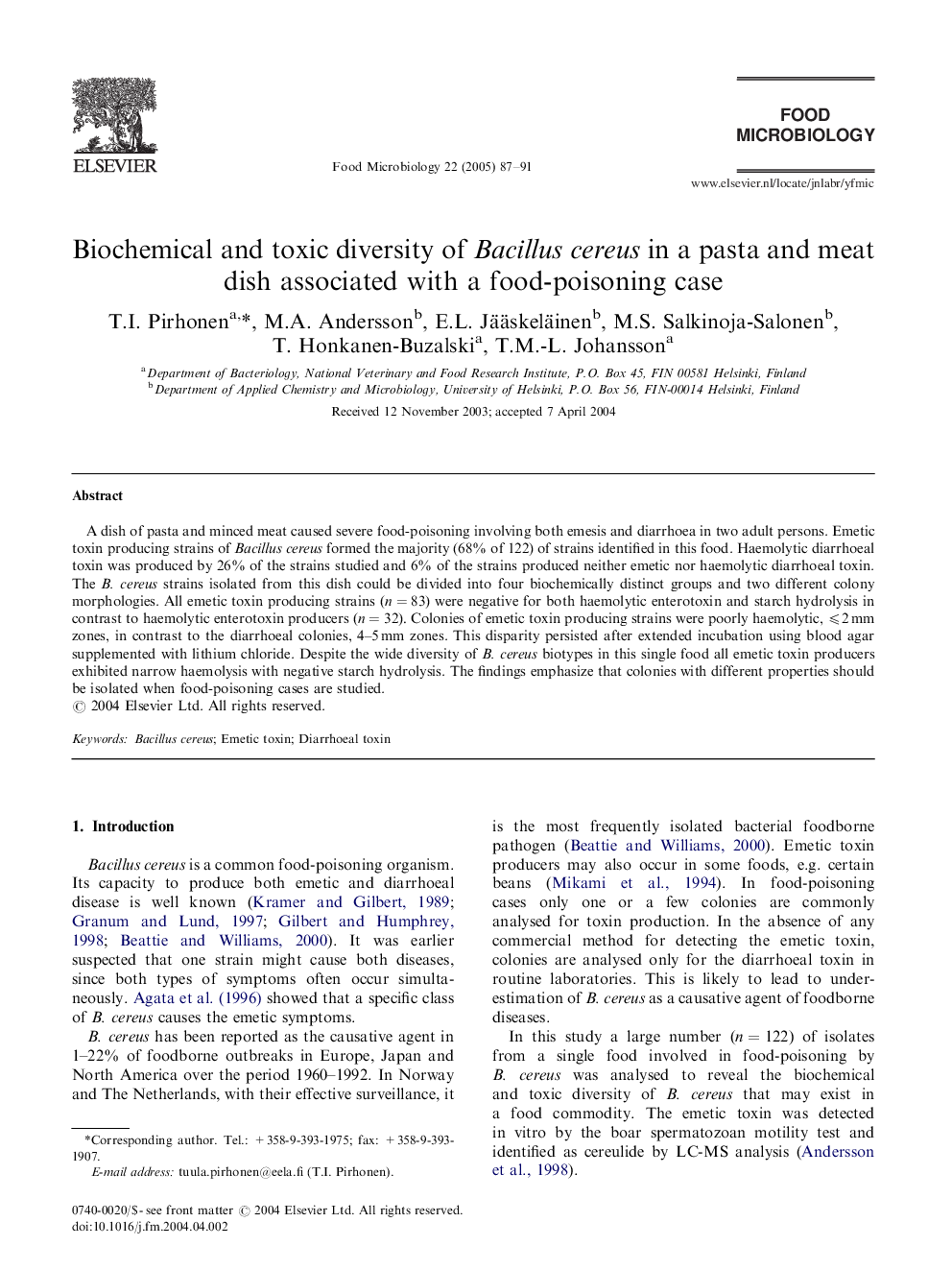| Article ID | Journal | Published Year | Pages | File Type |
|---|---|---|---|---|
| 9441731 | Food Microbiology | 2005 | 5 Pages |
Abstract
A dish of pasta and minced meat caused severe food-poisoning involving both emesis and diarrhoea in two adult persons. Emetic toxin producing strains of Bacillus cereus formed the majority (68% of 122) of strains identified in this food. Haemolytic diarrhoeal toxin was produced by 26% of the strains studied and 6% of the strains produced neither emetic nor haemolytic diarrhoeal toxin. The B. cereus strains isolated from this dish could be divided into four biochemically distinct groups and two different colony morphologies. All emetic toxin producing strains (n=83) were negative for both haemolytic enterotoxin and starch hydrolysis in contrast to haemolytic enterotoxin producers (n=32). Colonies of emetic toxin producing strains were poorly haemolytic, ⩽2 mm zones, in contrast to the diarrhoeal colonies, 4-5 mm zones. This disparity persisted after extended incubation using blood agar supplemented with lithium chloride. Despite the wide diversity of B. cereus biotypes in this single food all emetic toxin producers exhibited narrow haemolysis with negative starch hydrolysis. The findings emphasize that colonies with different properties should be isolated when food-poisoning cases are studied.
Keywords
Related Topics
Life Sciences
Agricultural and Biological Sciences
Food Science
Authors
T.I. Pirhonen, M.A. Andersson, E.L. Jääskeläinen, M.S. Salkinoja-Salonen, T. Honkanen-Buzalski, T.M.-L. Johansson,
